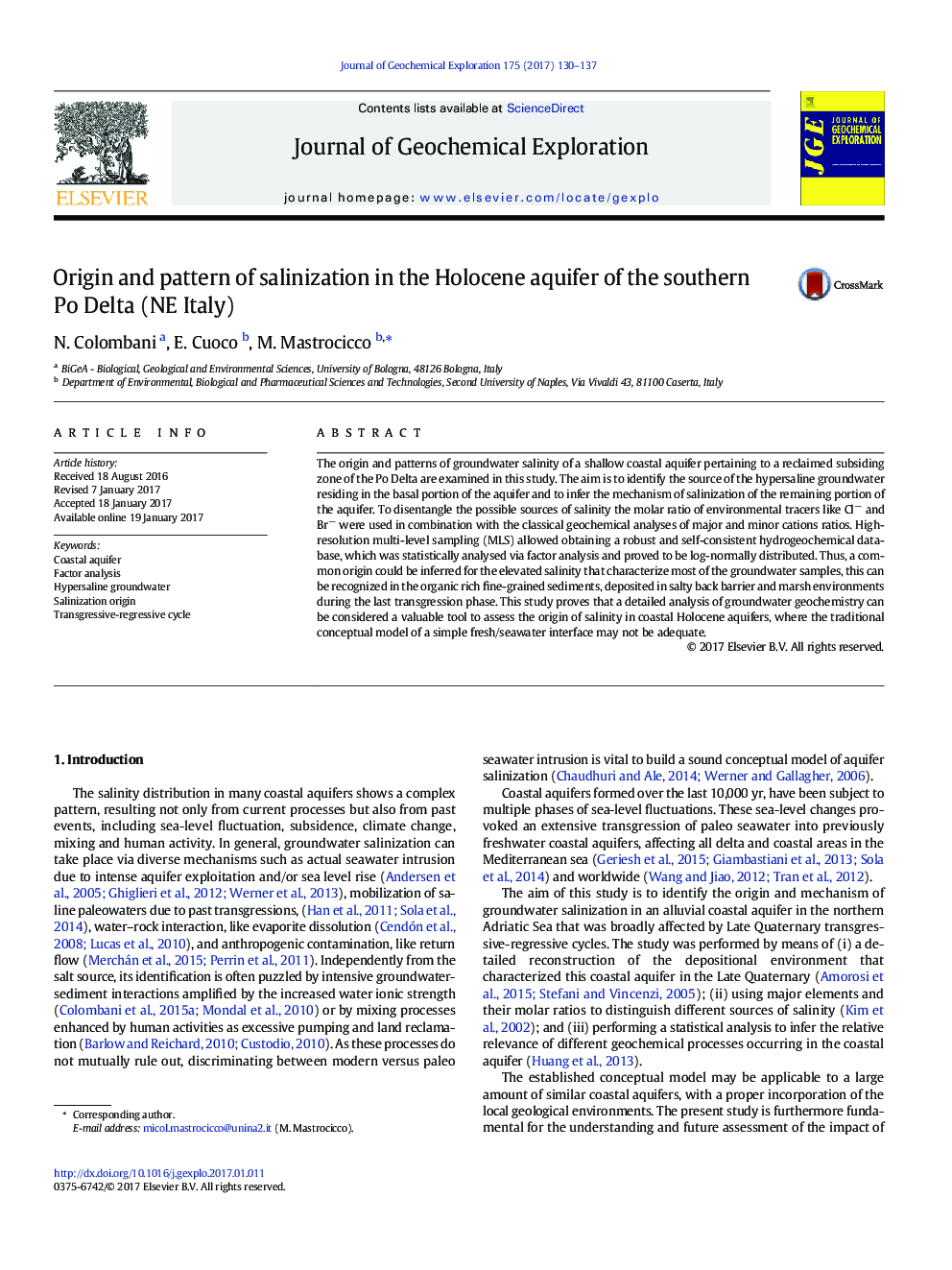| Article ID | Journal | Published Year | Pages | File Type |
|---|---|---|---|---|
| 5754573 | Journal of Geochemical Exploration | 2017 | 8 Pages |
Abstract
The origin and patterns of groundwater salinity of a shallow coastal aquifer pertaining to a reclaimed subsiding zone of the Po Delta are examined in this study. The aim is to identify the source of the hypersaline groundwater residing in the basal portion of the aquifer and to infer the mechanism of salinization of the remaining portion of the aquifer. To disentangle the possible sources of salinity the molar ratio of environmental tracers like Clâ and Brâ were used in combination with the classical geochemical analyses of major and minor cations ratios. High-resolution multi-level sampling (MLS) allowed obtaining a robust and self-consistent hydrogeochemical database, which was statistically analysed via factor analysis and proved to be log-normally distributed. Thus, a common origin could be inferred for the elevated salinity that characterize most of the groundwater samples, this can be recognized in the organic rich fine-grained sediments, deposited in salty back barrier and marsh environments during the last transgression phase. This study proves that a detailed analysis of groundwater geochemistry can be considered a valuable tool to assess the origin of salinity in coastal Holocene aquifers, where the traditional conceptual model of a simple fresh/seawater interface may not be adequate.
Keywords
Related Topics
Physical Sciences and Engineering
Earth and Planetary Sciences
Economic Geology
Authors
N. Colombani, E. Cuoco, M. Mastrocicco,
